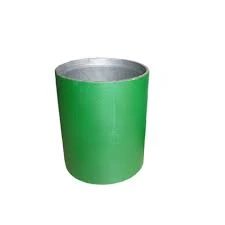- Afrikaans
- Albanian
- Amharic
- Arabic
- Armenian
- Azerbaijani
- Basque
- Belarusian
- Bengali
- Bosnian
- Bulgarian
- Catalan
- Cebuano
- Corsican
- Croatian
- Czech
- Danish
- Dutch
- English
- Esperanto
- Estonian
- Finnish
- French
- Frisian
- Galician
- Georgian
- German
- Greek
- Gujarati
- Haitian Creole
- hausa
- hawaiian
- Hebrew
- Hindi
- Miao
- Hungarian
- Icelandic
- igbo
- Indonesian
- irish
- Italian
- Japanese
- Javanese
- Kannada
- kazakh
- Khmer
- Rwandese
- Korean
- Kurdish
- Kyrgyz
- Lao
- Latin
- Latvian
- Lithuanian
- Luxembourgish
- Macedonian
- Malgashi
- Malay
- Malayalam
- Maltese
- Maori
- Marathi
- Mongolian
- Myanmar
- Nepali
- Norwegian
- Norwegian
- Occitan
- Pashto
- Persian
- Polish
- Portuguese
- Punjabi
- Romanian
- Russian
- Samoan
- Scottish Gaelic
- Serbian
- Sesotho
- Shona
- Sindhi
- Sinhala
- Slovak
- Slovenian
- Somali
- Spanish
- Sundanese
- Swahili
- Swedish
- Tagalog
- Tajik
- Tamil
- Tatar
- Telugu
- Thai
- Turkish
- Turkmen
- Ukrainian
- Urdu
- Uighur
- Uzbek
- Vietnamese
- Welsh
- Bantu
- Yiddish
- Yoruba
- Zulu
coupling for tubing
Coupling for Tubing Ensuring Seamless Connections in Pipe Systems
In the world of industrial fluid transport, the integrity and reliability of tubing systems are paramount. Tubing serves as the backbone for various applications, from oil and gas extraction to chemical processing. A critical component of these systems is the coupling, which acts as a connector between two pieces of tubing, ensuring not only a secure connection but also optimal flow and minimal leakage.
Understanding Couplings
Couplings are mechanical devices designed to connect two tubes or pipes, allowing for the transfer of fluids from one section to another. They come in various forms, materials, and sizes, accommodating diverse applications and fluid characteristics. The choice of coupling depends on factors such as the type of fluid being transported, pressure requirements, temperature variations, and the environmental conditions in which the system operates.
Types of Couplings
There are several types of couplings, including threaded, welded, and flanged couplings
.1. Threaded Couplings These are perhaps the most common type of coupling, featuring internal and external threads that allow for a secure connection by screwing the pieces together. Threaded couplings are easy to install and disassemble, making them ideal for maintenance and repairs.
2. Welded Couplings For more permanent connections, welded couplings are often used. The tubes are fused together using welding techniques, creating a strong and rigid joint that can withstand high pressures and harsh environments. However, the downside is the difficulty in disassembling the connection without cutting the pipe.
coupling for tubing

3. Flanged Couplings These couplings consist of two flanges bolted together, providing a strong connection that can be easily disassembled. Flanged couplings are particularly useful in situations where frequent maintenance is required or when the tubing needs to be altered, as they allow for flexibility in pipeline design.
Material Selection for Couplings
The material from which a coupling is made is crucial to its performance. Common materials include stainless steel, carbon steel, plastic, and brass, each offering distinct advantages. Stainless steel, for instance, is preferred in corrosive environments due to its resistance to oxidation and pitting. In contrast, plastic couplings are lightweight and resistant to chemical corrosion, making them suitable for specific applications in the chemical industry.
The Importance of Proper Installation
Regardless of the type of coupling selected, proper installation and maintenance are essential for ensuring the longevity and effectiveness of a tubing system. Incorrectly installed couplings can lead to leaks, which not only compromise system efficiency but can also pose significant safety hazards. It is vital to follow manufacturer guidelines and industry standards during installation, ensuring that the couplings are secured and adequately tested for leaks before the system is put into operation.
Conclusion
In conclusion, couplings play an instrumental role in the functionality and safety of tubing systems across various industries. Understanding the different types of couplings and their applications, along with proper installation techniques, is essential for achieving reliable connections and maintaining efficient fluid transport. As technology advances, the development of innovative coupling solutions continues to enhance the resilience and effectiveness of piping systems, ensuring they meet the ever-growing demands of modern industrial applications. Ultimately, investing in the right coupling solutions and adhering to best practices can lead to improved operational efficiency and reduced downtime, contributing to the overall success of industrial fluid transport systems.
-
Tubing Pup Joints: Essential Components for Oil and Gas OperationsNewsJul.10,2025
-
Pup Joints: Essential Components for Reliable Drilling OperationsNewsJul.10,2025
-
Pipe Couplings: Connecting Your World EfficientlyNewsJul.10,2025
-
Mastering Oilfield Operations with Quality Tubing and CasingNewsJul.10,2025
-
High-Quality Casing Couplings for Every NeedNewsJul.10,2025
-
Boost Your Drilling Efficiency with Premium Crossover Tools & Seating NipplesNewsJul.10,2025







